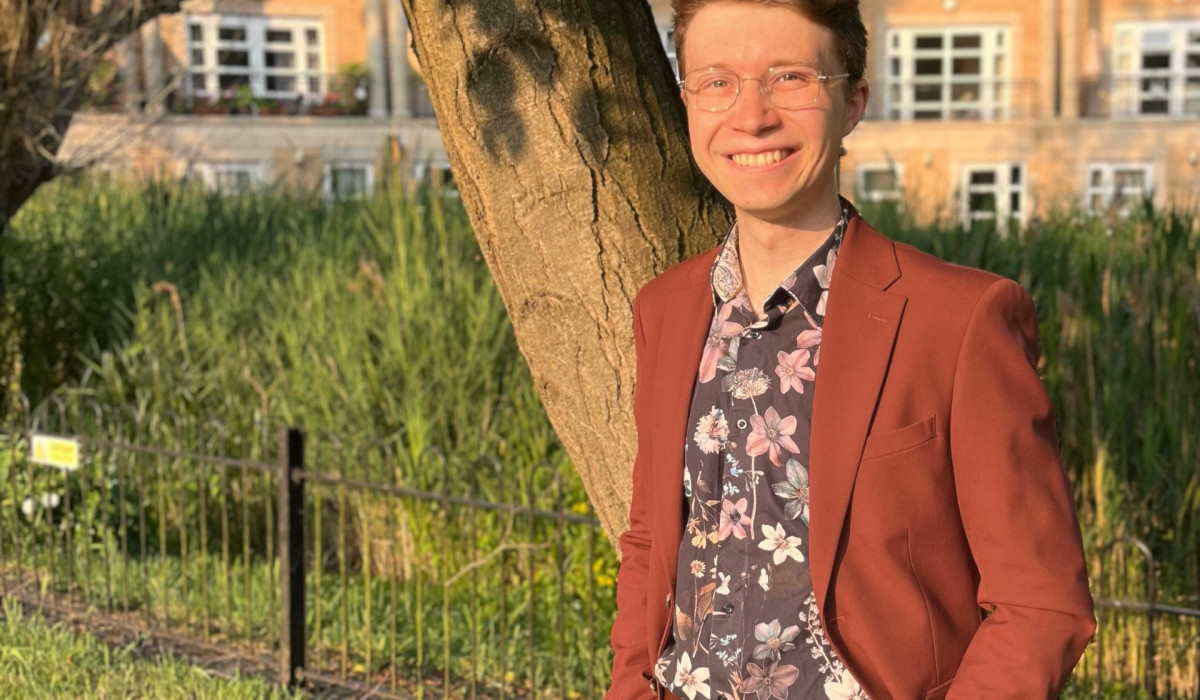Meet James, our new College Assistant Professor in Physics.
Hi James! Could you start by telling us a little bit about your background and how you ended up in Cambridge?
Sure! I've been in Cambridge for the past nine years. I initially came here to do my undergraduate degree in mathematics at Downing College. After completing my undergrad, I stayed on to do my master’s, and then eventually a PhD and postdoc. My journey started with pure mathematics, but I gradually transitioned to theoretical physics during my studies.
That’s quite a transition! You started with pure mathematics - did you always enjoy math?
Yes, I’ve always enjoyed it, but my interests evolved over time. I initially came to Cambridge wanting to focus solely on pure mathematics. In school, I took biology, chemistry, mathematics and further mathematics at A-level - I didn’t even study physics past the age of 16. However, during my second year, I encountered quantum mechanics for the first time and found it incredibly interesting. By my third year, I was taking as many quantum-related courses as possible. Even though my background was stronger in pure mathematics, by the time I did Part III of the mathematical tripos (a master’s-level course), I was essentially focussing entirely on theoretical physics.
It’s impressive how you made that transition. So, you did your PhD in physics - what was your research focused on?
Yes, my PhD was focussed on the intersection of theory and experiments in particle physics. My research involved comparing data from collider experiments, like those at CERN, with precise theoretical calculations. In particular, I worked on what happens when protons collide in high-energy experiments and how to model the outcomes using quantum chromodynamics (QCD).
That sounds incredibly complex! Could you break down some of the key aspects of your work for us?
Absolutely! So, when protons collide in particle accelerators like the Large Hadron Collider (LHC), we want to understand the outcome. In principle, the Standard Model of particle physics describes protons, which are composite particles built from more fundamental ones - quarks and gluons. However, the force that binds the quarks and gluons together is a strong force, which is extremely difficult to understand mathematically – normally in physics, we deal with weaker interactions like gravity and electromagnetism, but our tools break down when confronted with more powerful interactions.
Amazingly, at very high energies, it turns out that to a very good approximation, you can break down the collision of two protons into two parts, though. You can imagine that protons are a bubbling cauldron of quarks and gluons, up until the moment of collision, when one of the quarks and gluons is selected at random from each proton. Then, the fundamental quarks and gluons interact freely, before turning into composite particles which are then detected. The free interactions can be understood mathematically, which leaves the initial probabilistic distributions of the quarks and gluons to understand; we infer these missing pieces from experimental data. In my research, we have previously used neural networks to fit these probability distributions, but are now interested in moving towards a Bayesian framework instead.
How did you find it difficult to transition from pure maths to physics during your PhD?
Honestly, it was tough at first. I hadn’t done any programming before my PhD, and suddenly I had to learn FORTRAN and work with complex data sets. My first year was a steep learning curve; I even questioned my decision to pursue this field, and considered switching to a more theoretical area instead. But by my third year, things started to click. I understood the work better and began contributing meaningfully to my group’s research. Having a supportive supervisor also made a big difference!
You’re now a director of studies at the college—what does that role entail?
Yes, I’m the director of studies for first- and second-year physical natural science students. I’m responsible for organising the teaching for all the students in those years. That includes hiring supervisors and making sure the students receive proper guidance. I also teach some of the courses myself, including mathematics for first-year natural scientists, and electromagnetism and quantum physics for second-year physicists.
What do you hope to achieve in the next year while working at Lucy?
I’m in a good place right now where I can pursue research that interests me and work with some brilliant people. The future is open, and I’m excited to see where these new collaborations take me. At the same time, I’m really enjoying teaching and getting to know my students. It’s a rewarding experience to help them develop their skills and watch them grow over the course of their studies.
Thank you so much for your time, James. It’s been a pleasure speaking with you!




